VSEPR_VOID
National Hazard
   
Posts: 719
Registered: 1-9-2017
Member Is Offline
Mood: Fullerenes
|
|
Preparation of Hydroferrocyanic Acid
A Supplemental Publication for the Preparation of Cupric Ferrocyanide, Cupric Hydrogen Ferrocyanide, Sodium Cupric
(II) Ferrocyanide, and Basic Sodium Cupric Oxyferrocyanide By V.alence S.hell E.lectron P.air R.epulsion
(I) Introduction
Hydroferrocyanic acid [(H4Fe(CN)6] is a milk white powder when pure that is used in the preparation of ferrocyanide salts and hydrogen cyanide. It is
slightly soluble in water (15g/100 ml @ 14 degrees celsius), ethanol, and methanol, and insoluble in acetone and diethyl ether. H E Williams in ‘The
Chemistry of Cyanogen Compounds and their Manufacture and Estimation’ documents the numerous reactions of hydroferrocyanic acid with alkali, alkali
Earth, and transition metal salts. Reacting hydroferrocynic acid with a metal oxide is one of the only known way to produce pure, non-double salt,
ferrocyanides. Hydroferrocyanic acid forms esters with alcohols. When decomposed by strong heating (above 100 degrees celsius) it released hydrogen
cyanide, nitrogen, and iron carbide. The reaction that is used the prepare hydroferrocynic acid is as follows:
K4Fe(CN)6 + 4HCl → (H4Fe(CN)6 + 4KCl
Alternatively other soluble alkali or earth alkali ferrocyanide salts may be used in lieu of potassium ferrocyanide.
(II) Reagents
Potassium Ferrocyanide Trihydrate, 80 grams/ 0.0947 moles
12 molar Hydrochloric Acid (37%), 180 ml/ 0.6 moles
Distilled Water
Acetone, 100ml
(III) Equipment
400 ml Beakers
250ml Beaker
Hotplate/stir w/ Stir Bar
Vacuum Filtration Equipment
Digital Balance
Vacuum Desiccator
Ice Bath
(IV) Procedure A: Acetone Wash
40 Grams of potassium ferrocyanide trihydrate (0.095 moles) (not ferricyanide) was weighed out and transferred to a 400 ml beaker then dissolved in
200 ml of distilled water. Once Dissolved 90 ml of 12 molar hydrochloric acid is added to the solution. Upon addition, the solution became opaque
with a white milky fine precipitate. The mixture was stirred for ten minutes to allow the reaction to complete. It was then placed into an ice bath
for 20 minutes and the temperature allowed to drop to 5 C. Following this, the now settled white power was filtered using vacuum and the
yellowish-white feed is then washed with 100 ml of acetone. This caused the hydroferrocyanic acid to clump together and become viscous. The
consistency was similar to polystyrene napalm. This colloid was then transferred to dry under vacuum in an 250 ml beaker under a desk lamp to speed
evaporation. During the drying step the powder turned light blue still maintained its other properties. The final yield was 8.41 grams of a pale blue
powder . This is a 41% yield (20.52g being the theoretical yield).
(V) Procedure B: No Acetone Wash
40 Grams of potassium ferrocyanide trihydrate (0.095 moles) (not ferricyanide) was weighed out and transferred to a 400 ml beaker then dissolved in
200 ml of distilled water. Once Dissolved 90 ml of 12 molar hydrochloric acid is added to the solution. Upon addition, the solution became opaque
with a white milky fine precipitate. The mixture was stirred for ten minutes to allow the reaction to complete. It was then placed into an ice bath
for 20 minutes and the temperature allowed to drop to 5 C. Following this, the now settled white power was filtered using vacuum. The filter paper and
white material was transferred to a vacuum desiccator, dried (without the presents of a desk lamp), crushed, and weighed. The final yield was 15 grams
of a milk-white powder . This is a 73% yield (20.52g being the theoretical yield).
(VI) Discussion
Diethyl ether was recommended in the literature to precipitate the hydroferrocyanic acid but none was available for the purpose. For that reason an
ice bath was used to precipitate it as potassium chloride is highly soluble at 0 celcius. This is thought the be the step at which the most product
is lost due to hydroferrocyanic acid remaining in solution. The yield may be improved by reducing the amount of water used to dissolve the potassium
ferrocyanide and increasing the temperature so that it may all dissolve.
The product was confirmed to be hydroferrocyanic acid by reacting a solution of the final product with basic copper carbonate. This formed a dark
blood red precipitate of copper ferrocyanide.
The waste solution containing the excess HCl and KCl was dumped down a PCV plastic sink. The notable causes the plastic to stain blue, alarming
laboratory staff. This staining could be do to unprecipitated hydroferrocyanic acid reacting with metal residues in the sinks surface. I plan to
pursue this line of questioning in the future by reacting an acidified solution of hydroferrocyanic acid with PVC untreated with metal salts as a
control and metal contaminated PVC powder.
The “blueing” of equipment such as the sink, scoopulas, beakers (when not clean), and metal surfaces by the hydroferrocyanic acid was observed.
This was most troublesome as the only method of removal seems to be the application of 12 molar sulfuric acid. For this reason avoid handling the
substance with metal tools, in beakers with residue on them, or near prized bits of machinery is to be advised against.
When the blue hydroferrocyanic was dissolved in distilled water the solution took on a noticeable blue color, as opposed to the white hydroferrocyanic
acid which did not. This indicated that it is light sensitive and through some unknown reactions the acid converts to a blue hue when exposed to light
or the heat caused by lighting over an extended period of time. This is similar to the process of preparing cyanotypes, a photographic printing
process used in the printing of blueprints. This process involves the reaction of ferric ammonium citrate with potassium ferricyanide. For this reason
it may be possible to use a sheet of white paper, once soaked in a solution of hydroferrocyanic acid and left to dry, for photography.
(VII) Bibliography
“911metallurgist”
https://www.911metallurgist.com/blog/hydroferrocyanic-acid
Used for solubility data, molecular weight, properties, and reactions with alcohol
H E Williams, The Chemistry of Cyanogen Compounds and their Manufacture and Estimation
Used for reactions, formation of ferrocyanides, and preparation (loosely described in the
text),
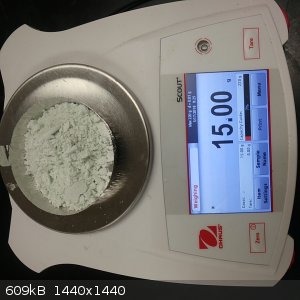 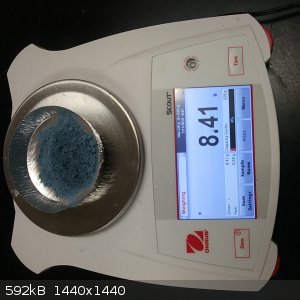 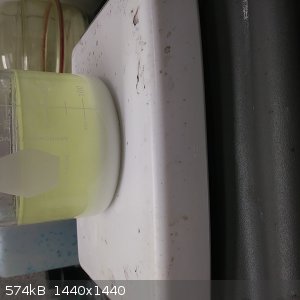
[Edited on 17-5-2018 by VSEPR_VOID]
Within cells interlinked
Within cells interlinked
Within cells interlinked
|
|
|
Velzee
Hazard to Others
  
Posts: 379
Registered: 19-8-2015
Location: New York
Member Is Offline
Mood: Taking it easy
|
|
Very nice write up! Although there appears to be a typo in the reagents section (70 grams should be 40 grams), but other than that, looks good!
Though, I do wonder; are there any qualitative tests to prove that the product is indeed hydroferrocyanic acid?
Check out the ScienceMadness Wiki: http://www.sciencemadness.org/smwiki/index.php/Main_Page
"All truth passes through three stages. First, it is ridiculed. Second, it is violently opposed. Third, it is accepted as being self-evident."
—Arthur Schopenhauer
"¡Vivá Cristo Rey!"
—Saint José Sánchez del Río |
|
|
VSEPR_VOID
National Hazard
   
Posts: 719
Registered: 1-9-2017
Member Is Offline
Mood: Fullerenes
|
|
Quote: Originally posted by Velzee  | | Very nice write up! Although there appears to be a typo in the reagents section (70 grams should be 40 grams), but other than that, looks good!
Though, I do wonder; are there any qualitative tests to prove that the product is indeed hydroferrocyanic acid? |
The typo has been corrected. I did a test involving a reaction with basic copper carbonate to confirm that the final product was indeed
hydroferrocaynic acid
Within cells interlinked
Within cells interlinked
Within cells interlinked
|
|
|
zed
International Hazard
    
Posts: 2277
Registered: 6-9-2008
Location: Great State of Jefferson, City of Portland
Member Is Offline
Mood: Semi-repentant Sith Lord
|
|
Now, I may be proposing something impossible.
But, I'm curious.
The preparation of Sodium CyanoBorohydride is odious. It requires reacting Hydrogen Cyanide with NaBH4.
Is it possible that HydroFerroCyanic Acid, might also produce a complex with NaBH4?
And further, might that complex, inherit the specialized reducing qualities of Sodium Cyano Borohydride?
Stranger things have happened.
|
|
|
VSEPR_VOID
National Hazard
   
Posts: 719
Registered: 1-9-2017
Member Is Offline
Mood: Fullerenes
|
|
It sounds like something I would like to try but I very much am skeptical it would work. In that molecule, NaBH4 that is, the cyanide has bonded to
the boron. This is counter to ferrocyanides, for which the cyanide forms a complex with iron, acting as one anion. \
However, when heated hydroferrocyanic acid decomposes to hydrogen cyanide, iron carbide, and nitrogen. A reaction where HCN is produced in situ may be
possible. I imagine that the boiling of hydroferrocyanic acid and sodium borohydride in solution might work. The excess HCN would be more easily
contained than if it were to be generated by another method. The Sodium CyanoBorohydride would be separated from the iron carbide by filtration. I am
not sure if water would be the best solvent as its bp is only 100C and for full decomposition I would aim for higher temperatures, say 160C.
Within cells interlinked
Within cells interlinked
Within cells interlinked
|
|
|
VSEPR_VOID
National Hazard
   
Posts: 719
Registered: 1-9-2017
Member Is Offline
Mood: Fullerenes
|
|
On the left, the reaction of white hydroferrocyanic acid with basic copper carbonate, and on the left the same reaction with the blue acid.
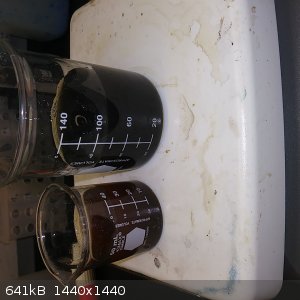 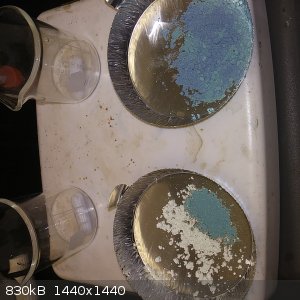
Both reactions show a precipitate of red cupric ferrocyanide forming, but with a the addition of a dark blue color as a result of the blue
hydroferrocyanic acid on the right. The blue color remains after filtration. When a control is conducted, only dissolving the blue acid in distilled
water, the same blue color appears indicating the contaminant is soluble.
[Edited on 18-5-2018 by VSEPR_VOID]
Within cells interlinked
Within cells interlinked
Within cells interlinked
|
|
|
aga
Forum Drunkard
    
Posts: 7030
Registered: 25-3-2014
Member Is Offline
|
|
Yay ! Nice work.
|
|
|
MrHomeScientist
International Hazard
    
Posts: 1806
Registered: 24-10-2010
Location: Flerovium
Member Is Offline
Mood: No Mood
|
|
Interesting! I was under the impression that adding acid to ferrocyanide produced HCN though? The SDS for potassium ferrocyanide states acids as
incompatible material and that "Contact with acids liberates very toxic gas."
|
|
|
VSEPR_VOID
National Hazard
   
Posts: 719
Registered: 1-9-2017
Member Is Offline
Mood: Fullerenes
|
|
They must be wrong or be confused with ferricyanide. No HCN was liberated and the reaction went as expected. I would avoid heating the
hydroferrocyanic acid at above 100C for that very reason though.
Within cells interlinked
Within cells interlinked
Within cells interlinked
|
|
|
AJKOER
Radically Dubious
    
Posts: 3026
Registered: 7-5-2011
Member Is Offline
Mood: No Mood
|
|
I would avoid adding to your H4[Fe(CN)6] the product of a weak acid and chlorine bleach (NaOCl), as this forms hypochlorous acid (HOCl). The ensuing
redox could (speculation) proceed as follows:
2 H4[Fe(CN)6] + HOCl → 2 H3[Fe(CN)6] + HCl + H2O
And, based on the reported reaction: K3[Fe(CN)6] + HCl + H2O → HCN + K2[Fe(H2O)(CN)5] + KCl (see https://chemiday.com/en/reaction/3-1-0-5188 )
One might similarly expect:
H3[Fe(CN)6] + HCl + H2O → HCN + H2[Fe(H2O)(CN)5] + HCl
Or, per the last two reactions, the possible creation of some troubling HCN:
2 H4[Fe(CN)6] + HOCl → H3[Fe(CN)6] + HCN + H2[Fe(H2O)(CN)5] + HCl
[EDIT] Did find some support for my claim formation of HCN, to quote:
2 K2Ni(CN)4 + NaOBr + 4 H2O = 2 Ni(0H)2 + NaBr + 4 KCN
+ 4 HCN
Link: https://archive.org/stream/qualitativechem00perkgoog/qualita...
---------------------------------------------
Also, per an educational source (http://www.chegg.com/homework-help/questions-and-answers/tes... ) to quote:
"The test for Cu2+ and Zn2+ ions involves adding K4 [Fe(CN)6 ] to a weakly acidic test solution. If the solution is too acidic, toxic HCN(g) will
form."
So apparently also avoid acidified Cu2+ and Zn2+ ions!
[Edited on 19-5-2018 by AJKOER]
|
|
|
VSEPR_VOID
National Hazard
   
Posts: 719
Registered: 1-9-2017
Member Is Offline
Mood: Fullerenes
|
|
Quote: Originally posted by AJKOER  | I would avoid adding to your H4[Fe(CN)6] the product of a weak acid and chlorine bleach (NaOCl), as this forms hypochlorous acid (HOCl).
[Edited on 19-5-2018 by AJKOER] |
Generally I do avoid reacting things with sodium hypochlite unless there is previous documentation for that very reason. Its strange how many
dangerous substances can be produced from that house hold chemical: chlorine, oxides of chlorine, chloroform (which can decompose to phosgene), and
even hydrazine.
There seem to be many conflicting reports about the reaction of an acid with a ferrocyanide salt. During my reactions I always used concentrated
hydrochloric acid and never once did I observe the evolution of a gas, including HCN in any quantity. The reaction went just as the sources said it
would go.
Within cells interlinked
Within cells interlinked
Within cells interlinked
|
|
|